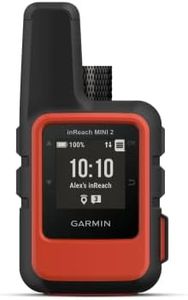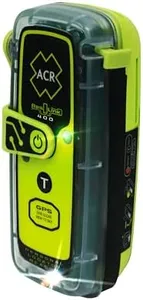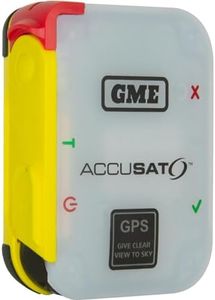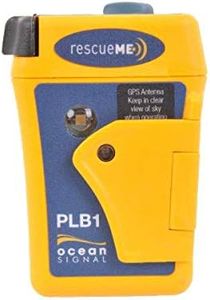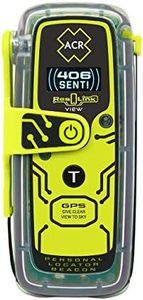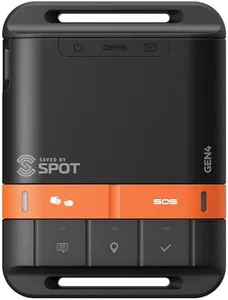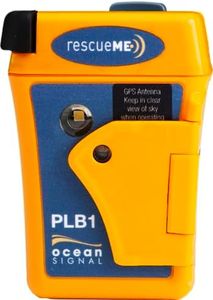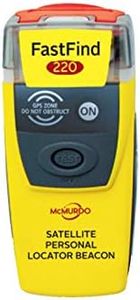We Use CookiesWe use cookies to enhance the security, performance,
functionality and for analytical and promotional activities. By continuing to browse this site you
are agreeing to our privacy policy
8 Best Personal Locator Beacon For Hiking
From leading brands and best sellers available on the web.Buying Guide for the Best Personal Locator Beacon For Hiking
Choosing a personal locator beacon (PLB) for hiking is an important decision for anyone venturing into remote or off-grid areas. PLBs are compact, handheld devices that send a distress signal to emergency services when activated, providing an essential lifeline in situations where cellphone coverage is unavailable. The right PLB should match how, where, and how often you hike, as well as your comfort with technology. By understanding the main features and how they apply to your needs, you can select a PLB that offers the best combination of reliability, ease of use, and peace of mind.Signal Type (Satellite Network)The signal type refers to the method and network by which your PLB communicates an emergency alert. Most standard PLBs use government-operated satellite systems like Cospas-Sarsat, which is recognized worldwide and does not require an ongoing subscription. Some more advanced devices combine PLB functionality with satellite messaging networks like Iridium or Globalstar. The reliability and coverage area of the network are crucial because they determine whether your call for help will go through. Basic PLBs work globally on dedicated rescue frequencies, making them ideal for international or remote hikes, while combination devices may offer extra messaging features but could depend on subscription services. Evaluate if you need only emergency rescue (basic PLB) or want two-way messaging or location tracking as well.
Battery Type and LifeThe battery in a PLB is pivotal because the device must function reliably when you need it most. PLBs typically use long-life, non-rechargeable batteries that last for years in standby (up to 5-7 years or more). When activated, they need to operate at full power for a minimum period (often 24+ hours) to broadcast your distress signal. Some newer beacons use rechargeable batteries but these often require regular maintenance checks. Choose a PLB with a battery life that corresponds to the duration of your hikes and the remoteness of your destinations. For infrequent but lengthy outdoor trips, a longer-life non-rechargeable battery might be better. If you adventure frequently and can manage checking and recharging, a rechargeable may work.
Size and WeightThe physical size and weight of a PLB can influence how easily you'll carry it with you. Smaller, lighter PLBs are easier to stow in a pocket, pack, or even attach to clothing, which increases the likelihood that you’ll always have it handy in an emergency. However, extremely compact units may have smaller antennas or shorter operational times. Consider your packing style and what you’re comfortable carrying—ultralight hikers often pick the tiniest, lightest beacons, while those less concerned with weight might prefer slightly larger units that are easier to handle, especially with gloves.
Activation Method and Ease of UseHow you activate the PLB in an emergency is vital. Most PLBs use a simple, often protected mechanism (like lifting an antenna or removing a safety tab), to avoid accidental activation. Some may require pushing and holding a button for a few seconds. In high-stress or life-threatening situations, an easy-to-use PLB can literally save your life. Try to choose a beacon that is intuitive and simple to activate, even in the dark or with cold, gloved hands. Think about your typical hiking conditions and try to picture using the PLB quickly under stress.
Location Accuracy (GPS Capability)Location accuracy refers to how precisely the PLB can communicate your position to rescuers. Most modern PLBs have integrated GPS modules that can provide accurate coordinates (often within a few meters), which speeds up rescue efforts. Older or basic models may only transmit a general location, relying on satellite triangulation, which can be less precise. For remote or challenging terrain, precise GPS is highly recommended. If you regularly venture deep into wilderness or rough country, prioritize a PLB with advanced GPS capabilities.
Waterproofness and DurabilityPLBs are designed for outdoor use, so their ability to withstand water, dust, and impacts is critical. The waterproof rating tells you how submersible or splash-proof the device is (often rated as IP67 or higher). If you hike in wet climates or may cross rivers, choose a beacon with high waterproof and ruggedness standards to ensure it will work even after being dropped or exposed to the elements. If your adventures are limited to more sheltered areas, this may be less critical.
